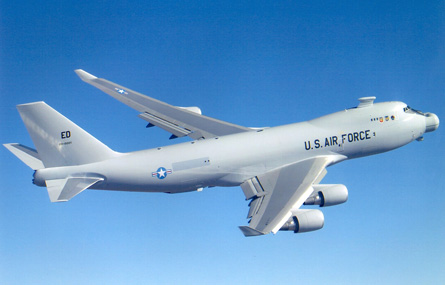Boeing is nearing the first light of the 1MW-class energy beam on board a parked YAL-1 Airborne Laser (ABL).
The key milestone for the missile defence programme was originally scheduled for late August. Powering-on the laser on board the aircraft is one of the last major critical steps before the first airborne shootdown test of a ballistic missile target, scheduled during August 2009.
As of 29 August, Boeing was in the process of activating each of the subsystems for the six-module laser, says the company's ABL programme director Mike Rinn.
Chlorine and inert gases such as helium have already been loaded and flowed through the system, and iodine will be added when the system is ready to generate a beam, says Rinn. Adding ammonia to the mixture is not necessary until a long-duration test is required, he adds.
Rinn says the first flight will be followed by a series of short laser tests aimed at tweaking the chlorine and iodine mixture to optimise the power output. Testing will then discontinue until at least early October while Northrop Grumman installs the beam control system on the modified Boeing 747-200 (below).
 |
|---|
© US Air Force |
The combined system is scheduled for more ground tests through the rest of this year, with the first airborne checkout tests for the YAL-1 to begin in early 2009.
To be preceded by several test shots against sounding rockets, the official shootdown test scheduled next August will be heavily scrutinised to validate the US government's investment of more than $5 billion in the ABL programme.
Rinn is confident that only one test shot should be needed to score a direct hit on a target. However, the US Missile Defense Agency has additional funds and target missiles available to conduct more shootdown tests if they are necessary. "There's room where you could do multiple tests," he says.
The ABL programme will enter an at least two-year holding period after the shootdown test, regardless of the result, as the MDA has not yet requested funds to begin production of a second 747-based demonstrator. Boeing wants to use the two-year period to conduct flight tests aimed at expanding the system's firing envelope.
Source: Flight International




















